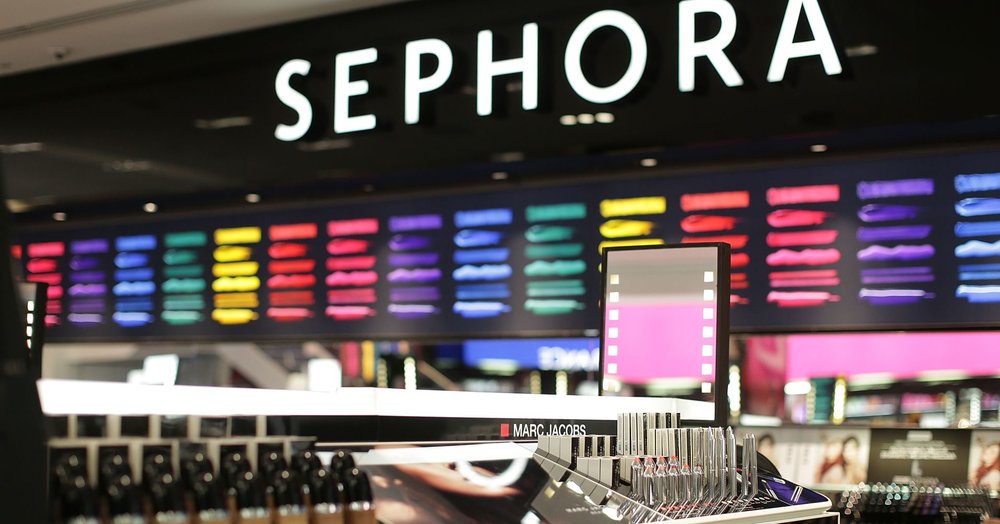The Multinational conglomerate, LVMH, recently released a financial report for the first half of the fiscal year 2018 showing decent growth for its subsidiary, Sephora.
Although Sephora’s sales in the Selective Retail reporting group didn’t break out this year, LVMH reported that its Selective Retail rose 9 per cent during the same period last year.

The beauty retail industry has reached an estimate of $56.4 billion this year and Ulta’s sales have reached $1.5 billion in just a single quarter
Sephora vs. Ulta
The company bragged that Sephora has grown considerably across all operational areas thanks to its multichannel marketing approach which allows customers to shop online as well as in physical stores across the world. But Sephora’s 9 per cent growth in Selective Retail seems unimpressive in comparison to its U.S.-based competitor, Ulta, which reported an impressive 17.4 per cent growth in sales in the first quarter of 2018.
The beauty retail industry has reached an estimate of $56.4 billion this year and Ulta’s sales have reached $1.5 billion in just a single quarter. Last year, the company exhibited gangbuster performance after its sales skyrocketed to $5.9 billion, a 21.2 per cent increase than the previous year.
After its strong performance in the first quarter, Ulta increased its earnings per share for 2018. It also raised its full year growth prediction to 40 per cent in the ecommerce department. The company advised an overall 6 to 8 per cent growth in comparable sales and announced the opening of 100 new stores across the country to help reach its sales target for the year.
Plans for expansion
Ulta recently opened 34 new locations out of the 100 planned stores for 2018, reaching 1,107 locations by the end of its first quarter. On the other hand, its competitor Sephora has been lagging behind in retail growth with just 500 dedicated stores across the Americas.
The cosmetic giant also has an additional 600 locations inside J.C. Penney department stores, most of them in the same locations as the exclusive Sephora stores. However, this duplication of retail services doesn’t have a negative effect on Sephora’s sales volume or revenue.
Both Sephora and Ulta are the most dominant players in the beauty and cosmetic retail industry. Bluemercury has also jumped into the fray ever since it was acquired by Macy’s in 2015. Macy recently announced its plans to grow the brand by opening 25 dedicated shops as well 30 store-within-store inside Macy’s.
Thus plan could bring Bluemercury’s total store count to 220 by 2019 – a rather small market share when compared to Sephora and Ulta’s massive beauty empires.
Competition Lurks in the Shadows
While Ulta, Sephora and Bluemercury fight it out in the retail market, Amazon is spinning its web like a giant spider, waiting to attack the exploding online beauty sales with over 100 million of its Prime members. If Amazon steps into the cosmetic scene with its well-established ecommerce empire, it could mean game over for other players in the industry.
A recent study by AT Kearney showed that almost 69 per cent of the customers who shopped for beauty and personal products online preferred Amazon over other platforms.

A recent study by AT Kearney showed that almost 69 per cent of the customers who shopped for beauty and personal products online preferred Amazon over other platforms
Converging Paths
When Sephora had just landed on the shores of the cosmetic industry almost 2 decades ago, it operated in a completely different sphere of beauty than Ulta, which was launched in 1990. Both brands sold distinctly different beauty products with very little crossover.
While Sephora targeted the prestige cosmetic segment by offering higher-end brands which could previously be found in departmental stores only, Ulta’s main area of interest was professional hair care brands and higher-end fragrances. But that was decades ago when Ulta was still building its reputation in the industry.
Now that the company is neck-to-neck with Sephora, Prestige brands, that wouldn’t even go near Ulta 20 years ago, now want on the gravy train. Ulta has become Sephora’s biggest competitor in the luxury market and consumers find it almost impossible to tell the difference between the two brands.
Over the past several years, the two companies have been on a path of convergence, rather than divergence, competing for the same customers in beauty industry. It’ll be interesting to see whether the two will successfully find a way to differentiate themselves as they move towards each other.










